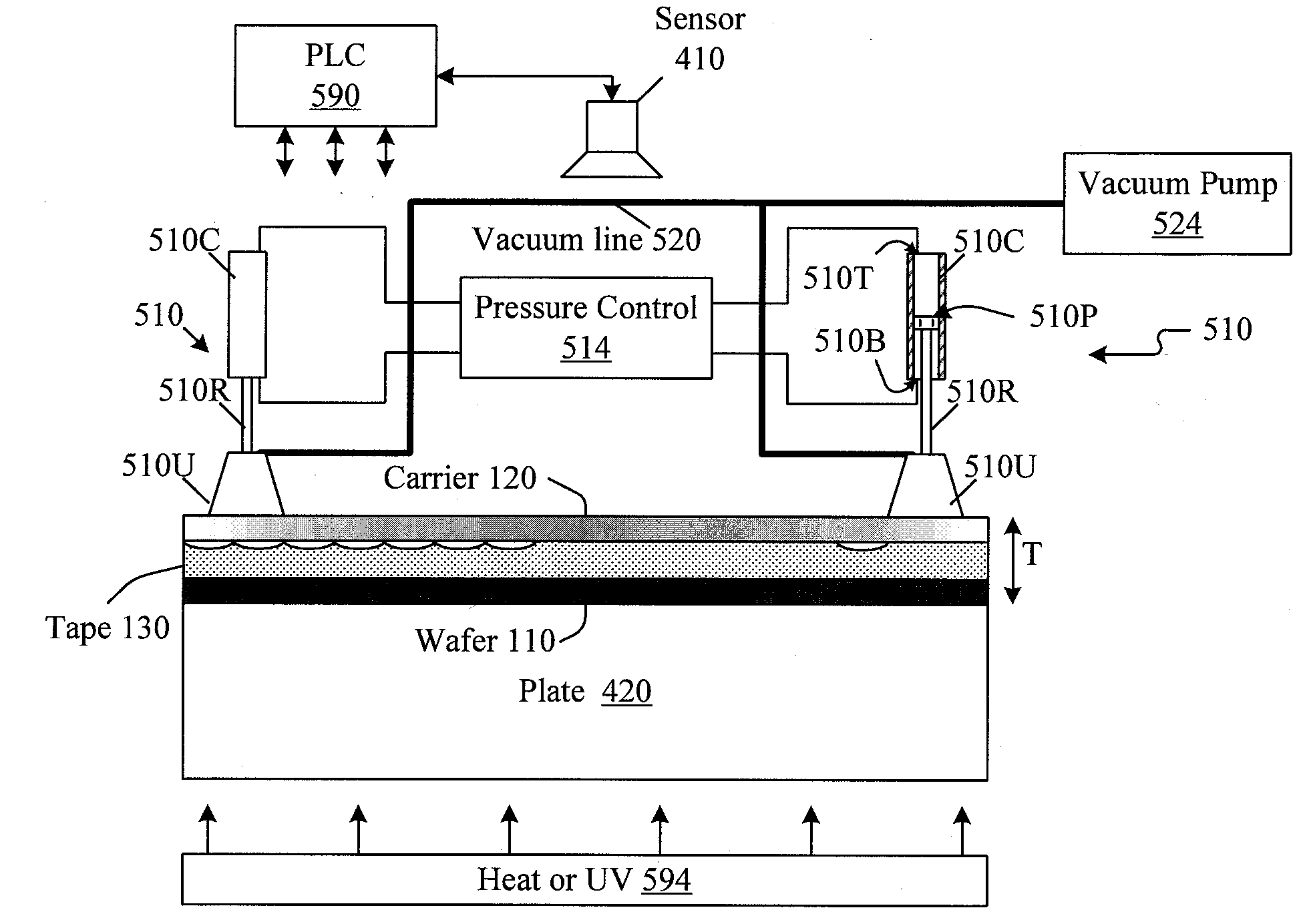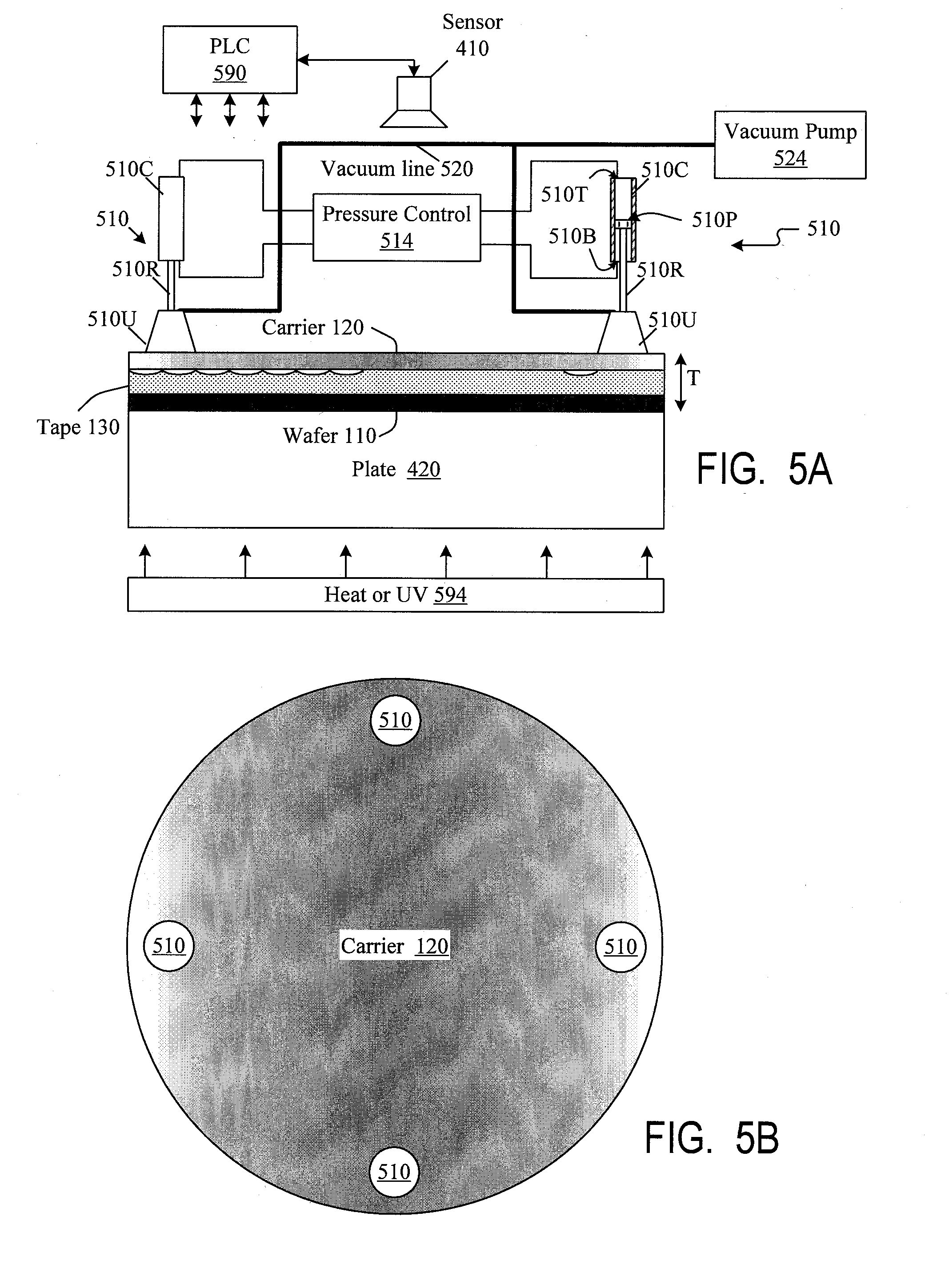Method and apparatus for debonding of structures which are bonded together, including (but not limited to) debonding of semiconductor wafers from carriers when the bonding is effected by double-sided adhesive tape
a technology of adhesive bonding and structure, applied in the direction of chemistry apparatus and processes, layered products, other domestic articles, etc., can solve the problems of non-uniform weakening of adhesive bond, complicated lifting off process, damage to wafer or carrier, etc., and achieve the effect of facilitating further separation of wafer and carrier
- Summary
- Abstract
- Description
- Claims
- Application Information
AI Technical Summary
Benefits of technology
Problems solved by technology
Method used
Image
Examples
Embodiment Construction
[0014]The embodiments described in this section illustrate but do not limit the invention. The invention is defined by the appended claims.
[0015]FIG. 4 illustrates a sensor 410 monitoring the thickness T of the structure consisting of semiconductor wafer 110 (e.g. a silicon wafer), carrier 120 (e.g. glass or silicon), and double-sided adhesive tape 130 bonding the wafer to the carrier. In FIG. 4, the gas emission from tape 130 occurs on the carrier side, but in other embodiments the gas emission may occur on the wafer side or on both sides. Wafer 110 can be a thick wafer, or can be a thin wafer tending to warp if left loose. The wafer rests on a plate 420, or is supported by a suitable chuck (e.g. a vacuum or electrostatic chuck, not shown), possibly by an end effector. The sensor can be a laser displacement sensor merely indicating the displacement of the top surface of carrier 120, or some other type of sensor. When the sensor's data indicate that the thickness T increases to a pr...
PUM
| Property | Measurement | Unit |
|---|---|---|
| Thickness | aaaaa | aaaaa |
| Force | aaaaa | aaaaa |
| Power | aaaaa | aaaaa |
Abstract
Description
Claims
Application Information
 Login to View More
Login to View More - R&D
- Intellectual Property
- Life Sciences
- Materials
- Tech Scout
- Unparalleled Data Quality
- Higher Quality Content
- 60% Fewer Hallucinations
Browse by: Latest US Patents, China's latest patents, Technical Efficacy Thesaurus, Application Domain, Technology Topic, Popular Technical Reports.
© 2025 PatSnap. All rights reserved.Legal|Privacy policy|Modern Slavery Act Transparency Statement|Sitemap|About US| Contact US: help@patsnap.com



